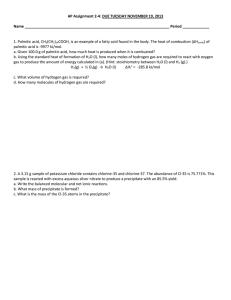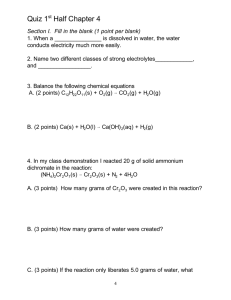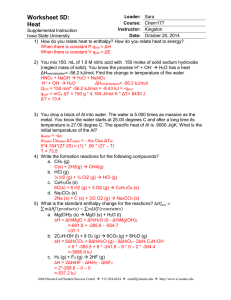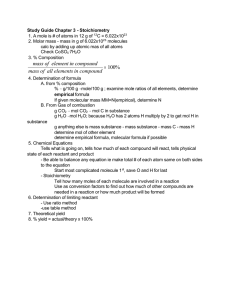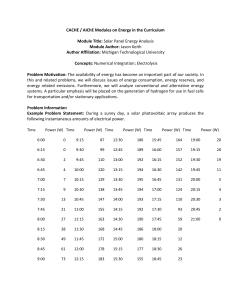10.40 Thermodynamics Fall 2003
advertisement
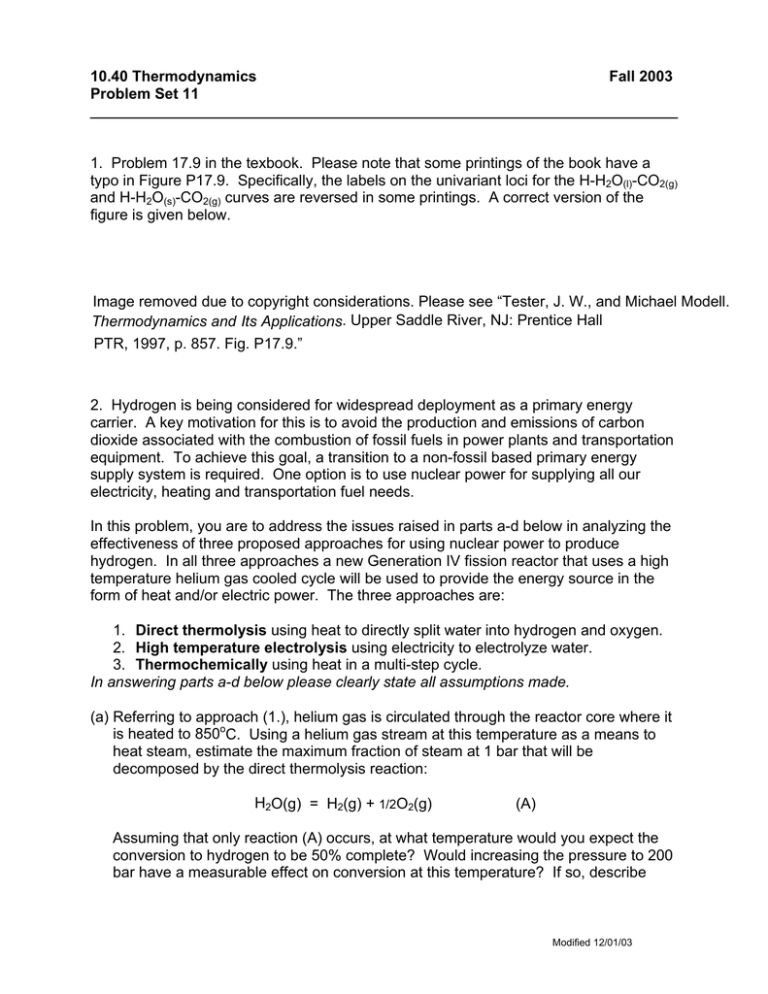
10.40 Thermodynamics Problem Set 11 Fall 2003 1. Problem 17.9 in the texbook. Please note that some printings of the book have a typo in Figure P17.9. Specifically, the labels on the univariant loci for the H-H2O(l)-CO2(g) and H-H2O(s)-CO2(g) curves are reversed in some printings. A correct version of the figure is given below. Image removed due to copyright considerations. Please see “Tester, J. W., and Michael Modell. Thermodynamics and Its Applications. Upper Saddle River, NJ: Prentice Hall PTR, 1997, p. 857. Fig. P17.9.” 2. Hydrogen is being considered for widespread deployment as a primary energy carrier. A key motivation for this is to avoid the production and emissions of carbon dioxide associated with the combustion of fossil fuels in power plants and transportation equipment. To achieve this goal, a transition to a non-fossil based primary energy supply system is required. One option is to use nuclear power for supplying all our electricity, heating and transportation fuel needs. In this problem, you are to address the issues raised in parts a-d below in analyzing the effectiveness of three proposed approaches for using nuclear power to produce hydrogen. In all three approaches a new Generation IV fission reactor that uses a high temperature helium gas cooled cycle will be used to provide the energy source in the form of heat and/or electric power. The three approaches are: 1. Direct thermolysis using heat to directly split water into hydrogen and oxygen. 2. High temperature electrolysis using electricity to electrolyze water. 3. Thermochemically using heat in a multi-step cycle. In answering parts a-d below please clearly state all assumptions made. (a) Referring to approach (1.), helium gas is circulated through the reactor core where it is heated to 850oC. Using a helium gas stream at this temperature as a means to heat steam, estimate the maximum fraction of steam at 1 bar that will be decomposed by the direct thermolysis reaction: H2O(g) = H2(g) + 1/2O2(g) (A) Assuming that only reaction (A) occurs, at what temperature would you expect the conversion to hydrogen to be 50% complete? Would increasing the pressure to 200 bar have a measurable effect on conversion at this temperature? If so, describe Modified 12/01/03 how you would calculate it. (b) Referring to approach (2.), the addition of electrical work in a properly designed electrolysis cell with Pt electrodes will catalytically decompose water to hydrogen and oxygen as given in reaction A. Estimate the minimum amount of electrical power that would be required to produce 20 moles of hydrogen per second by electrolysis carried out at 850oC and 1 atm. (c) In a practical electrolysis process, transport and kinetic limitations increase the required power to 1.5 times the minimum from part (b). Assuming that helium gas at 850oC is fed to the power cycle, estimate the absolute minimum rate of heat transfer from the reactor core needed to supply the required electrical power. An average ambient temperature for heat rejection of 25oC can be assumed. (d) Referring to approach (3.), the following 3-step thermochemical cycle using iodine (I) and sulfur (S) based intermediates has been proposed by General Atomics: 1. I2 + SO2 + 2H2O = 2 HI + H2SO4 2. 2 HI = H2 + I2 3. H2SO4 = H2O + SO2 + ½ O2 where all components are in a gaseous state. In their process, liquid water is supplied at 25oC and H2 and O2 are produced at 25oC which is also the ambient temperature. General Atomics rates the efficiency of their overall 3-step process at 0.47-- defined as the ratio of the heating value of the net H2 produced to the heat input from the reactor helium loop. To justify whether 0.47 (or 47%) is a thermodynamically acceptable value, estimate the maximum efficiency of the process assuming all reactions in the cycle go to completion. Note that the net cycle given by reactions (1-3) is equivalent to reaction (A) given in part (a). Modified 12/01/03 Data: Heat capacities of steam (H2O(g)) , He(g), H2(g), and O2(g) can be assumed constant with the following values: Cp (H2O(g) ) = 43.95 /mol K Cp (H2(g)) = 29.3 J/mol K Cp (O2(g)) = 29.3 J/mol K Cp (He(g)) = 20.8J/mol K Standard Gibbs energy and enthalpy of formation of water: ∆Gof (H2O(g) ) = -228.8 kJ/mol and ∆Hof (H2O(g) ) = -241.9 kJ/mol with standard states taken as ideal gas at 1 atm, 298.15 K. Enthalpy of vaporization of pure water at 25oC = ∆Hvap = 2442.5 kJ/kg See also Appendix G and Figures 8.11a and 8.11b in Thermodynamics and its Applications, 3rd ed. for additional property data. Modified 12/01/03
